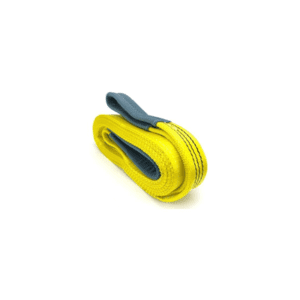POLYESTER DUPLEX WEB SLING
- Home Back
- POLYESTER DUPLEX WEB SLING
POLYESTER DUPLEX WEB SLING


Polyester Webbing Sling is woven with machine for one time, and processed in the different sewing methods, it can be used the strengthened eye on its ends to improve its strength. Its standard tonnage can be distinguished through the color, and the wide and smooth loading surface especially applies to the articles with the soft surface and if necessary, the protective sleeve which is wider than sling can be used. Because of no contacting metal, it causes hardly damage to the loaded article surface processed with lacquer. Flat woven webbing sling made from polyester can not cause sparkle if it is used under the hazardous and explosive environment. In addition, its low extending property can decrease the bound of load in the courses of lifting, and avoid damage from the shocking strength. At the same time, make codes for the dyeing colors of sling and suggest the simple and correct methods for loading, which is well convenient for our lifting user.
- We recommend wear sleeves where sharp edges occur Colour coded according to tonnage
- The maximum Elongation permitted is only 3% at WLL Temp. Range: -40C to + 100C
- Polyester can deal with weaker acids and oil and grease.
- Individual serial number is printed on a blue label along with length, swl, mode factors.
- UV-resistant, helps prolong the life of the webbing
Mechanical consideration
- Determine weight of the load.
- Select sling having suitable characteristics for the type of load, hitch and environment.
- Slings shall not be loaded in excess of the rated capacity. Consideration should be given to sling angles, which are discussed below.
- Slings with fittings used in a choker hitch shall be of sufficient length to assure that the choking action is on the webbing.
- Slings used in a basket hitch shall have the load balanced to prevent slippage.
- Slings shall not be dragged on the floor or over an abrasive surface.
- Slings shall not be twisted or tied into knots, or joined by knotting.
- Slings shall not be pulled from under loads when the load is resting on the sling.
- Slings shall always be protected from being cut by sharp corners, sharp edges, protrusions or abrasive surfaces.
- Do not drop slings equipped with metal fittings.
- The opening in fittings shall be the proper shape and size to insure that the fitting will seat properly in the hook or other attachment


